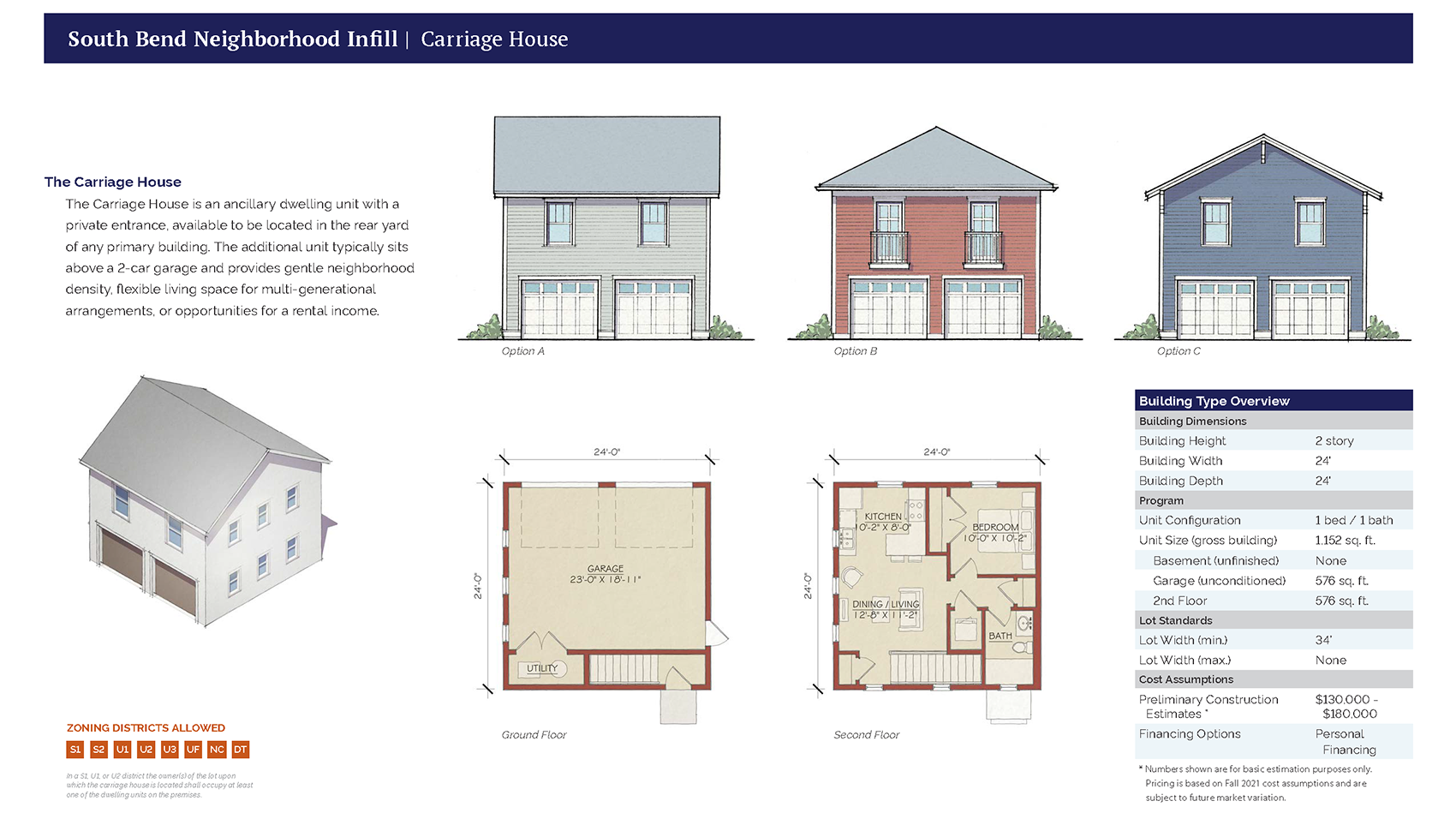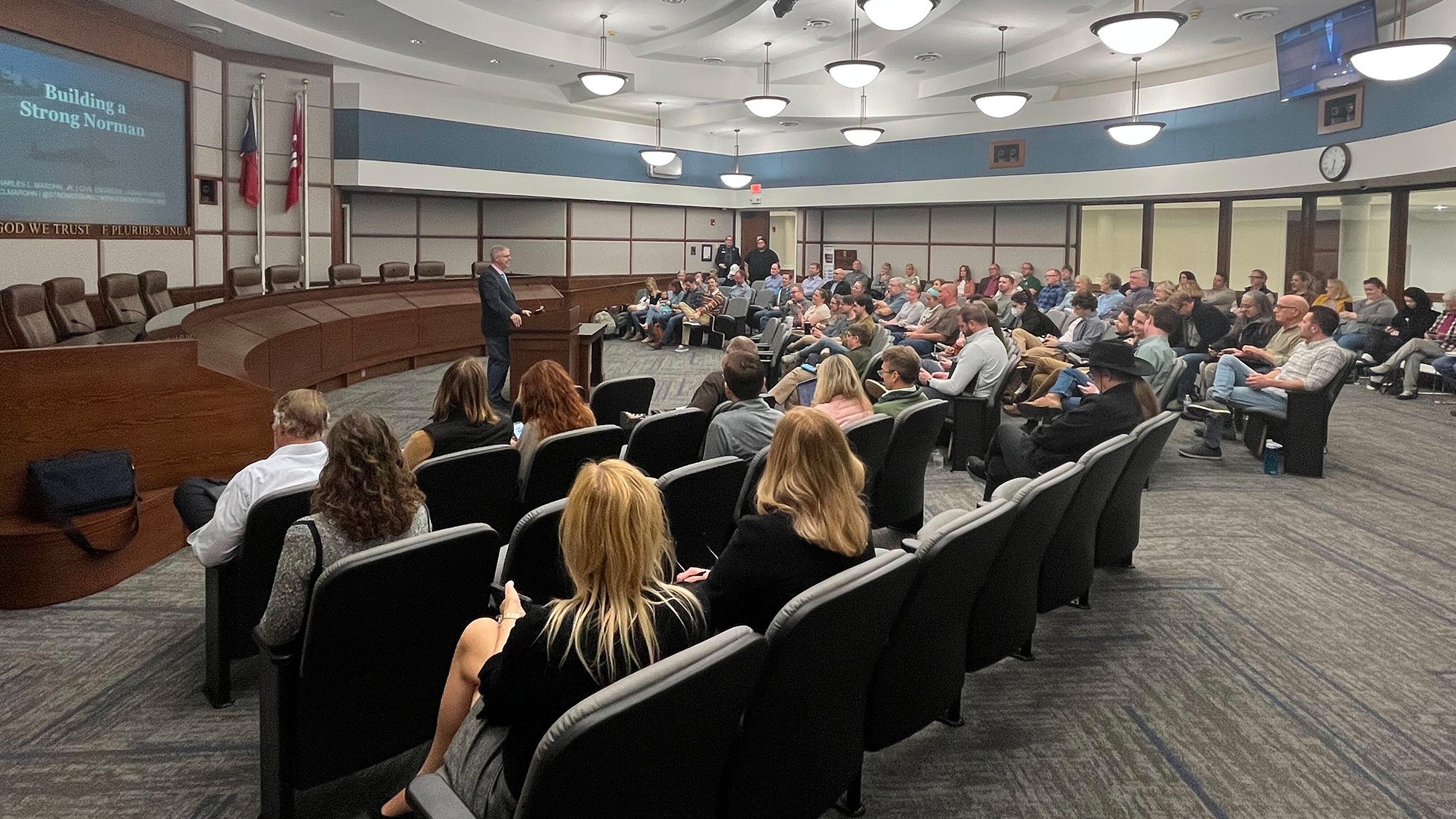Say Yes to New Housing—Before Anyone Even Asks To Build It
(Source: City of Kalamazoo, MI.)
Regulations post a challenge for building resilient communities today. This struggle is deeper than the surface observation that we have regulations or even the more focused argument that our regulations are too detailed. For centuries, cities have had regulations. (An ancient example can be found in Vitruvius’s treatise, De architectura.) The struggle, which is unique today, is that we have locked our neighborhoods into stasis.
Our development and zoning regulations lock neighborhoods in amber, unable to adapt to respond to the unique conditions we face in our communities. These regulations are not developed by infallible people, and our human experience is ever changing with time.
The ongoing housing crisis makes this struggle more evident. Almost all of the development we see today is built to a finished state. When the last roof shingle is installed or when the last piece of sod is laid, the development is complete. The buildings are not permitted to mature or change.
The housing crisis is telling us that we need the next increment of development—more than just single houses. But we have no mechanism to do this in existing neighborhoods, so in many places you see the development of new townhouses or apartment buildings popping up on the edge of town, far away from the urban amenities expected with that density. These large-leap, all-at-once developments require new pipes, roads, and other infrastructure, which is passed on to the residents in higher rent or sale prices. These developments may be literally and figuratively out of reach for a first-time homebuyer or too much space for a single person without a family.
To build a strong town, we need to think on a smaller scale. Instead of large leaps, we need to explore small steps. Instead of all-at-once development, we need incremental growth built by many hands.
The Response: Pre-Approved Building Plans
Our neighborhoods are works in progress and are meant to mature over time. As our neighborhoods grow slowly in response to the needs of the people who live there, our city becomes the best version of itself.
Multiple cities like South Bend, Indiana; Kalamazoo Michigan; and Groveland, Florida, have recognized the need to shift away from a focus on large developments and focus on the neighborhoods they already have. These cities discovered they could tap into the housing potential within existing neighborhoods by shifting their energy and focus. These communities took a bold step to elevate the citizen developer and began by listening to their residents to understand what existing residents needed, and how the city could assist in addressing that need.
This is no easy task to ask a bureaucracy to be critical in how they do business. The idea runs counter to the conventional approach for both planning and economic development. The first step for the above communities was to understand their housing market. This begins with a market study to reveal the abstract needs of the community, and also requires walking and observing the patterns within the community to understand existing conditions and patterns.
Informed with this information, these communities enlisted the help of architects and builders to respond and emulate these patterns of the city. The results were prototype floor plans for various housing types. These plans could be stress tested on actual lots and against the current codes and approval process.
These simple steps began a cultural shift in South Bend, Kalamazoo, and Groveland that has resulted in streamlining the building process and encouraging infill developments within existing neighborhoods.
In addition to making the smallest increment of development possible, there is a long list of other benefits that result in this approach that are important to note:
Lowering the bar to entry for those who want to build a home within an existing neighborhood.
Reintroducing of traditional building and missing-middle housing types otherwise not offered by production builders.
Streamlining the approval process to reduce municipal involvement so people can start building faster and focus investment into physical improvements in a community, and not on the approval process.
Encouraging development in the community and neighborhoods otherwise overlooked and allows the private sector to lead with investment.
Providing an obtainable and realistic vision for the community in both unit types and architectural style.
Supporting a local ecosystem and gets money off the sidelines and invested back into the community.
Most important for these cities: all of this can be accomplished with local resources.
A pre-approved building plans program is more than just house plans. Cities are complex systems and although there are many similarities found in cities, there are always unique local conditions. The cities that have adopted a pre-approved building plan program have had varying challenges and, as a result, they have responded in different ways. However, there are three key elements that are consistent in each of these programs.
The Components of a Successful Pre-Approved Building Program
1. Get everyone in city hall on the same page.
Pre-approved plans align the vision for the city with the procedures within city hall. Building officials and zoning departments review plans and coordinate with zoning regulations, typical lot configurations, and state building codes. This expedites approval and significantly lowers risk for small-scale development. It also increases the efficiency of staff by reviewing one plan that can be repeated multiple times in the city.
Implementing a pre-approved building program requires local government to operate as the highest form of collaboration and make the internal shift from vertical approaches to a more horizontal approach. This requires everyone in the city that touches new development to work together.
(Source: City of South Bend, IN.)
2. Educate the public.
City-sponsored development workshops introduce aspiring developers to a network of professionals who can help them select, plan, finance, and build a profitable project. These local networks are important to nurture. The intent is to start a conversation and share what is possible in your community.
This stage of the process:
Encourages citizen-led development.
Calibrates the next increment of development.
Builds confidence in the community.
Gets money off the sidelines and invested back into the community.
Develops a local ecosystem.
(Source: City of Kalamazoo, MI.)
3. Offer high-quality architectural plans.
The pre-approved plans should be high-quality architectural plans consistent with the local character and scale of the neighborhoods where they will be built.
As architects develop these plans, they should get input from local builders and keep local construction techniques and building codes in mind.
The traditional development pattern and existing housing stock in our communities include a wide variety of housing along the housing ladder, yet we overlook these today. Pre-approved house plans revive the full range of housing options, including starter homes that offer more affordable options for lower- and middle-income individuals.
The results are not only high-quality architectural plans consistent with the local character, but an emerging community of investors and developers from within the community.
(Source: City of South Bend, IN.)
RELATED STORIES
Change everything.
Here’s the program that will revitalize your city.
It’s time your city says “yes” to all types of housing.
Learn how to start the conversation with our 2023 Local-Motive course.













Edward Erfurt is the Chief Technical Advisor at Strong Towns. He is a trained architect and passionate urban designer with over 20 years of public- and private-sector experience focused on the management, design, and successful implementation of development and placemaking projects that enrich the tapestry of place. He believes in community-focused processes that are founded on diverse viewpoints, a concern for equity, and guided through time-tested, traditional town-planning principles and development patterns that result in sustainable growth with the community character embraced by the communities which he serves.